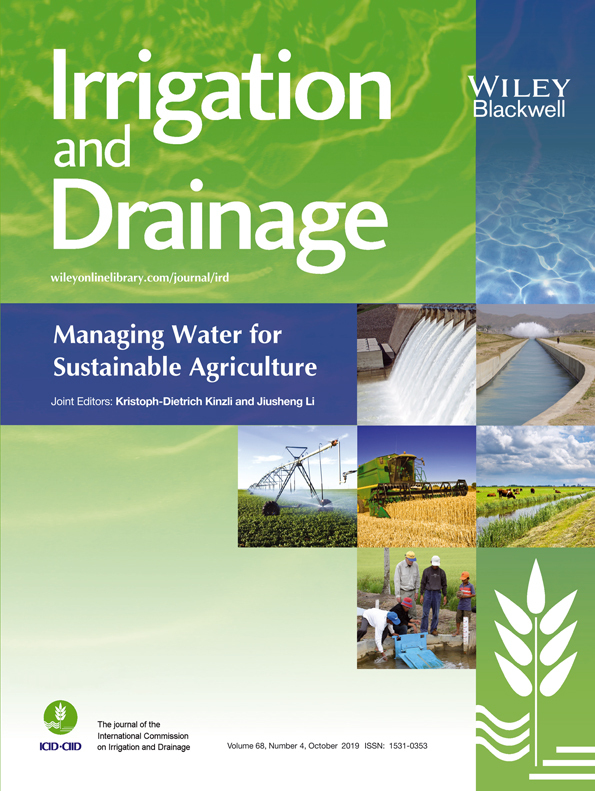Calibration and Validation of the Hargreaves-Samani Model for Reference Evapotranspiration Estimation in China†
Abstract
enDaily meteorological data of 12 years from 838 stations over China were collected and applied to calibrate the HS model by comparison between the values of ET0 calculated from the original HS and those from the PM model. The calibrated HS model was evaluated by the distribution and values of statistical indices. After calibration, the mean values of the mean absolute error (MAE) and the root mean square error (RMSE) decreased by 24.6 and 23.9%, respectively. The correlation coefficients (R) for most areas were greater than 0.9, and the minimum R increased by 2% compared with the values of the original. The minimum and maximum slope of the zero-intercept regression lines changed from 0.839 to 0.898 and from 1.46 to 1.04 during the validation period, respectively. The distribution of the statistical indices also showed better performance in most areas. The calibrated HS model produced the greatest ET0 estimation in the subtropical monsoon climate zone and the south-western part of the temperate monsoon climate zone. Although the performance of the HS model improved after calibration in the plateau and mountain climate and temperate monsoon climate zones, the original HS model had high enough accuracy. However, for the tropical climate regions, the HS model failed to give reliable results even in calibrated form. Overall, the study illustrated that the calibrated HS model has higher accuracy for most climate zones. © 2019 John Wiley & Sons, Ltd.
Résumé
frLes données météorologiques quotidiennes sur 12 ans de 838 stations en Chine ont été collectées et utilisées pour calibrer le modèle HS en comparant les valeurs de ET0 calculées à partir du HS d'origine et celles du modèle PM. Le modèle HS calibré a été évalué par la distribution et les valeurs des indices statistiques. Après l'étalonnage, les valeurs moyennes de l'erreur absolue moyenne (MAE) et de l'erreur quadratique moyenne (RMSE) ont diminué de 24.6 et 23.9%, respectivement. Les coefficients de corrélation (R) pour la plupart des zones étaient supérieurs à 0.9 et le minimum R augmentait de 2% par rapport aux valeurs de l'original. Les pentes minimale et maximale des droites de régression à ordonnée nulle sont passées de 0.839 à 0.898 et de 1.46 à 1.04 au cours de la période de validation, respectivement. La distribution des indices statistiques a également montré de meilleures performances dans la plupart des domaines. Le modèle HS calibré a produit l'estimation la plus élevée d'ET0 dans la zone climatique subtropicale de mousson et dans la partie sud-ouest de la zone tempérée de mousson. Bien que les performances du modèle HS se soient améliorées après étalonnage dans les zones de climat de plateau et de climat montagnard et tempéré de mousson, le modèle HS initial était suffisamment précis. Cependant, pour les régions climatiques tropicales, le modèle HS n'a pas donné de résultats fiables, même sous une forme calibrée. Dans l'ensemble, l'étude a montré que le modèle HS calibré est plus précis pour la plupart des zones climatiques. © 2019 John Wiley & Sons, Ltd.




